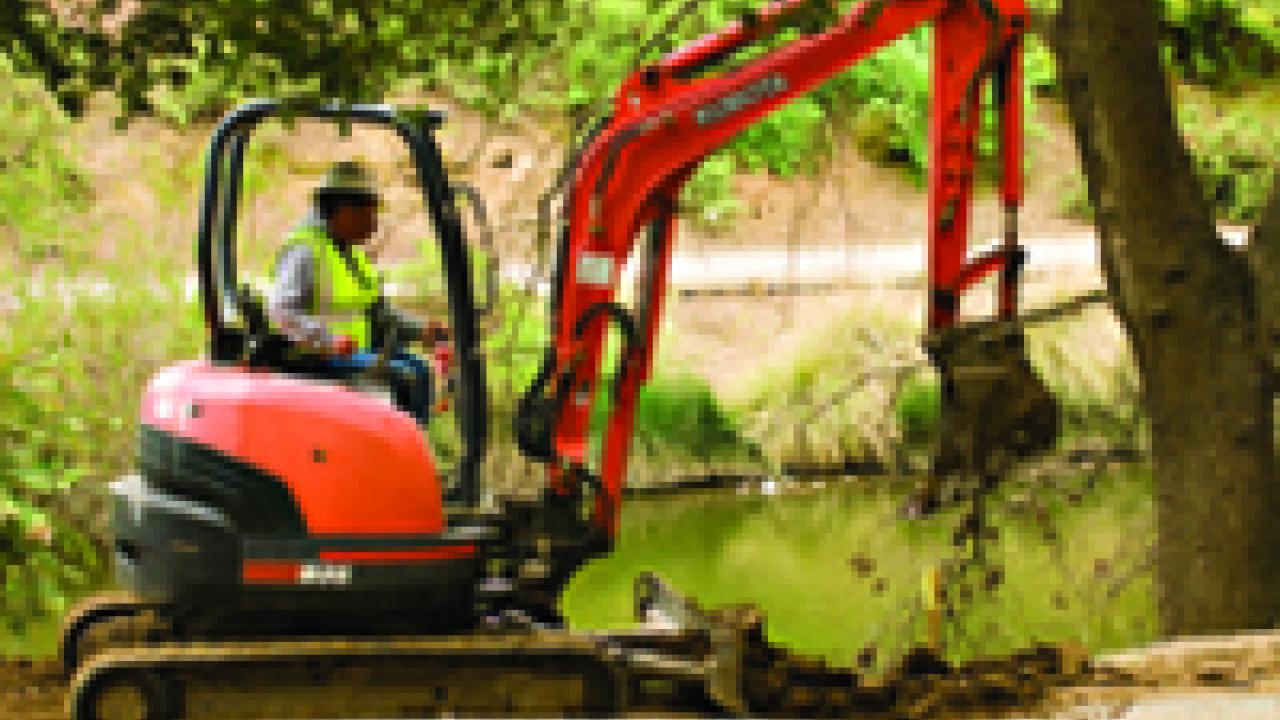Imagine yourself sitting on a rock wall along the arboretum waterway. The wall is circular, like the spiraling start of a coiled basket made from grass and other plants.
Oak trees are all around, including one that is well over 200 years old. It is called the Elder Oak, and you can see it across the waterway.
Imagine yourself sitting here, remembering the Patwin people who lived on this land long before it became UC Davis — people who gained sustenance from the plentiful acorns, and the fish and wildlife, and who wove baskets from the lush vegetation along the creek.
Soon you will be able to sit at this tranquil place — a place where you can remember and honor the American Indians who came before us. The contemplative area is now being built beside King Hall (School of Law), between Mrak Hall and the Mondavi Center for the Performing Arts.
This first phase of the “Project to Honor Native Americans — The Original Inhabitants of This Land” is due for completion this summer, with a dedication ceremony planned in September
“We are happy to have this project become reality, to recognize this as Patwin land, and to honor the ancestors of the Patwin people who still live in this area,” said Sid England, assistant vice chancellor for Sustainability and Environmental Stewardship.
The remembrance project has been several years in the making, from proposal to concept to design to construction, directed by a campus committee that consulted every step of the way with Patwin representatives. In 2006, then-Provost and Executive Vice Chancellor Virginia Hinshaw allocated $214,000 to build the project’s first phase.
England said the rock wall and decomposed granite walkway will be completed this month, and landscape planting will start in May, with the arboretum staff putting in grasses and other plants that naturally occurred in the Putah Creek watershed.
Of course, it really was a creek when the Patwin people lived alongside it. Today it is a holding basin for campus drainage, with the creek having been moved south in the late 1800s, to stop it from flooding Davisville.
The remembrance project’s serpentine path is meant to evoke the old creek, England said, while four stone columns along the way will carry inscriptions that tell what life was like along the creek.
For example, the first column will read: “Try to imagine this place with no buildings, no sidewalks, no roads.”
Two others will note how most of the men are off hunting elk in the tules or fishing “in the broad river to the east,” while the women of the village are preparing a meal for the children and the elders.
The columns will be pieces of basalt, chosen for its strength and resilience — thus representing the Patwin people.
A column at the center of the circle will be topped with this inscription: “Then, now and always — a part of this Land.” Down the sides of the column will be inscribed the names of 51 Patwin known to have inhabited the region and to have been forcibly relocated to missions from 1817 to 1836.
Interpretive signs will identify the area’s plants and trees, among them California grape, providing fruit to eat and vines for construction; soaproot, for use as a soap and to knock out fish; valley oak, coast live oak and interior live oak, all with acorns for food; grey pine, buckeye and bay trees, providing nuts; and sedge, redbud and willow, with shoots or roots for basketry.
Another sign will say this about the Elder Oak:
“Patwin children may have climbed its branches. Patwin men and women may have joked and laughed in its shade while resting from daily chores. The oak may have been witness to important political discussions. It would have been seen by the people as the source of life itself.
Indeed, the oak was the main staple of the Patwin people and many tribes in this part of the California, the sign will read. “It means the survival of the Patwin people.”
Media Resources
Clifton B. Parker, Dateline, (530) 752-1932, cparker@ucdavis.edu
